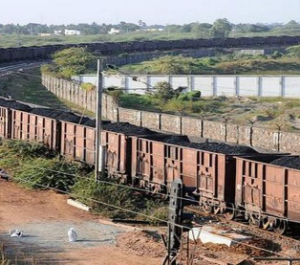
- The Dedicated Freight Corridor Corporation of India, Ltd. (DFCCIL) tasked with building the over ₹81,000 crore freight corridor in the country, began testing a new wagon that will help boost the cargo carrying capacity by four times due to increased length of the train, use of double-stack containers and more payload carrying capability.
- The wagon — used for hauling freight — have been tested by the Research Design and Standards Organization (RDSO) and are manufactured at the Golden Rock Railway Workshop in Tiruchirappalli, Tamil Nadu.
- These wagons will be under trial till January 26, 2020. If approved by the RDSO, wagons will be manufactured commercially as per industry requirements.
- The trial was conducted at a speed of 100 km/hour on a 270-km-long section of the western freight corridor from Rewari to Kishangarh. Currently, maximum speed of goods trains varies from 40 kmph to 100 kmph on the Indian Railways tracks. The DFC tracks are separate from the Indian Railways tracks. However, mostly they run parallel to each other.
- The corridor, touted as one of the biggest infrastructure projects in the country, will cover a 3,360-km stretch consisting of eastern and western corridors.
- The 1,504-km western freight corridor begins at Dadri, Uttar Pradesh, and goes up to India’s largest container port, Jawaharlal Nehru Port Trust, near Mumbai, passing vai Haryana, Rajasthan and Gujarat.
- The 1,856-km eastern corridor will run from Ludhiana in Punjab to Dankuni near Kolkata, traversing Haryana, Uttar Pradesh, Bihar and Jharkhand.
- Once the entire corridor becomes operational in December 2021, the average speed of the freight trains is expected to increase from the current 26 km/hour on Indian Railways line to 70 km/hour on the dedicated freight corridor.

